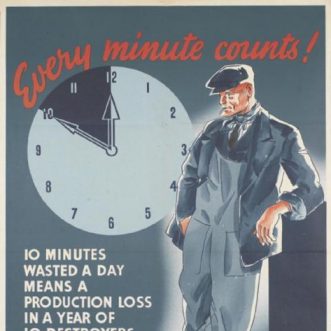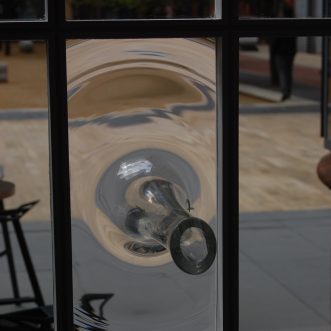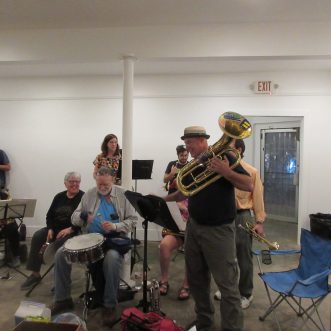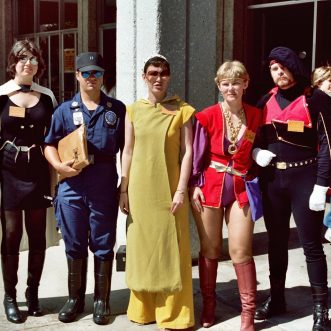
Productivity
Books updated per labour hour. VAT Returns filed per labour hour. Annual Accounts filed per labour hour. Client profit margin … Read More “Productivity”

Books updated per labour hour. VAT Returns filed per labour hour. Annual Accounts filed per labour hour. Client profit margin … Read More “Productivity”

Our word ‘Profit’ comes from a Latin verb proficere.
It’s meanings include:
to advance, make progress
to benefit, profit, take advantage
to help contribute, be useful
to depart, set out
Proficere itself is a combination of two words, ‘pro’ (meaning forwards) and ‘ficere’ which means:
to do
to make, construct, fashion, frame, build, erect
to produce, compose
to appoint
Ultimately this can be traced right back to proto-Sanskrit as a word that means ‘do, put, place’ – a word that represents our sense of agency in the world.
Why do we insist on reducing all this richness to mere coin?

If a business is a system for making and keeping promises, how do you measure its performance?
Some metrics:
How many promises you make, and how many you keep.
How much someone pays you to keep your promise to them.
How much it costs you to make a promise, and how much to keep it.
How much it costs you to resource, monitor and improve the way you make and keep your promises.
You could add:
How much it costs the planet for you to run this system.
How much you increase these things for yourself, your team and your clients:
Agency
Mastery
Autonomy
Purpose
Community
Simple.

Nothing says ‘Us’ and ‘Them’ quite like a wall. Whichever side you’re on.
Except of course that isn’t how people work.
In practice, each fort along the wall becomes the nucleus of a community, a vicus or neighbourhood, made up of the garrison and the local people who service it; adopting each others’ fashions, assimilating aspects of each others culture.
As a business, it pays to be really clear who your Promise is for; to put a metaphorical wall around ‘Us’, so that a prospect can easily tell which side they are on.
But it shouldn’t be set in stone. Walk your boundaries regularly, see where new neighbourhoods are forming and adjust accordingly.
PS my friend Lisa Settle is trekking the other Wall to raise funds for more research into Type 1 Diabetes.

It’s easy to get very excited about increasing efficiency through digitalisation, automation and AI.
But in the excitement we can forget that by ‘increasing efficiency’ what we are really trying to do is reduce ‘waste’, or to put it better, ‘wasted effort’.
In Lean, ‘wasted effort’ falls under 3 categories:
Muri seems like the kind of wasted effort we should always try to eliminate (and interestingly, is the least talked about).
Otherwise, what makes effort wasted?
Quite simply that the customer is not willing to pay for it.
This seems blindingly obvious. Less obvious is the necessary implication – that if a customer is willing to pay for effort, it is not wasted.
So if a certain type of customer is happy to pay extra to be treated differently, this is not Mura. If a customer is willing to pay to have their papers picked up in person, this is not Muda.
The customer’s perception of value is your source of profit. Don’t throw it out with the bathwater.

“The most successful forms start with identifying what is on the outside that they need to interact with and then working their way back into finding the form that best suits their external purpose.”*
For a business the key ‘outside’ thing that ‘they need to interact with’ is the customer. The interaction is making and keeping the business’s Promise.
So to me, it makes sense to build a supporting framework that reflects this. That way, everyone knows what the business is there to do.
*herman wagter & jean m. russell, cultivating flows.

One of the challenges in any business, particularly one with a written score, is how to share best practice.
People will continually find better ways to do things and new things to do. And as long as they are congruent with the promise we make, that’s exactly what we want.
But at the same time this is a kind of entropy – a gradual divergence from the original score for the ‘way we do things round here’ that eventually leads to a completely different piece being played – and an irrelevant score.
Not having a score at all doesn’t resolve this issue – it just makes it invisible. On the other hand, updating the score can end up as one of those jobs nobody has time or inclination to do.
How to overcome this challenge?
I think one answer at least might be regular group practice, where everyone gets together and plays out improvements they want to share – backed up by evidence of improved performance.
A ‘scribe’ takes notes and incorporates agreed improvements into the existing score – perhaps based on a vote, or even as alternative options.
Group practice reminds us that we are custodians of a Promise, collaborating to produce an experience that embodies that Promise for our audience – an experience built on the efforts of those who’ve gone before us, enhanced by those we work with, and most importantly, to be carried on by those who come after.
That sounds like a culture doesn’t it?

I’ve been having a problem with “employee engagement” for a while now. It’s a similar problem to the one I have with “customer experience”.
I’ve been thinking about why this is is, and I’ve realised that its because both these phrases speak from the same perspective. They’re really about ‘me the employer’ or ‘me the seller’. Actually, they are most often used by corporates, so are often really about ‘me the shareholder’.
As a result they feel (to me at least), manipulative, even extractive. They are about what I can get from you the employee, or you the customer.
Employees don’t want to be ‘engaged’, they want the same things you do:
Agency – to make their own ‘me-shaped’ dent in the universe.
Mastery – to learn and master new skills.
Autonomy – to be free to choose how we make their dent.
Purpose – to do this for something bigger than themselves, that has meaning beyond the sale.
Community – to do all this with ‘people like us’.
And the only experience the customer wants is one that gives them at least some of the same things you want:
Agency – to make their own ‘me-shaped’ dent in the universe.
Mastery – to learn and master new skills.
Autonomy – to be free to choose how we make their dent.
Purpose – to do this for something bigger than themselves, that has meaning beyond the sale.
Community – to do all this with ‘people like us’.
Perhaps if more businesses thought from this perspective, and tried to give their employees and customers what they really want, we’d have a happier, more productive world.

It’s hard to imagine a more old-fashioned business than shipping goods around the world under sail, yet that’s exactly what’s beginning to flourish right now, thanks to 21st century technology.
The internet, and some clever (open source) platform software connects a global community of producers, consumers and small ports with merchants like New Dawn Traders, enabling sailing ship enthusiasts to voyage ‘for real’, carrying profitable cargo as well as people who’ve bought into the experience; bringing the theatre of a ship coming in to small ports – turning ‘online shopping’ into a community event.
What’s more, these cargos may travel under sail, but the ships use the latest navigational and forecasting technology to stay on course, and avoid being taken by surprise by the weather.
What’s fascinating is what doesn’t get automated. Hauling ropes, for example is done old-school, by hand, by the crew.
“You can get motorised winches, that would do all this at the touch of a button,” Alex Geldenhuys of New Dawn Traders tells me, “but doing it by hand and voice is great exercise, fantastic team-building and very good for morale. Why would you want to get rid of that?”
For this group of people, automation isn’t the end game, it’s the means to a completely new game, that creates space for the very best of what it means to be human – curiosity, connection, community, and care for the planet.
That’s a future I’d like to see more of.

The right metaphor can get to the heart of your promise faster than a speeding bullet, creating an instant bond between you and the people you want to serve.
Metaphors work because they are simple, direct and emotional.
A good metaphor paints a picture worth a thousand words: “Longcroft Luxury Cat Hotel”.
The best metaphors conjure up an ongoing relationship: “Let us be Houston to your space mission”, “Welcome to our loving family”.
A metaphor that truly captures your promise acts as a compass for everyone involved in the business – your team, your collaborators, your suppliers and your clients. Whatever the situation, people will always know the right way to go.
But you can take it even further, by using your metaphor to actively design the way your business works, creating your own virtual world, where people take on different roles to play out what that metaphor means for your clients. If you get the metaphor right, it won’t even feel like work.
And that means you can make your business autonomous.
If everyone knows their part, has access to all the right props, and has a compass for when things go astray, they don’t need you to watch over them do they?